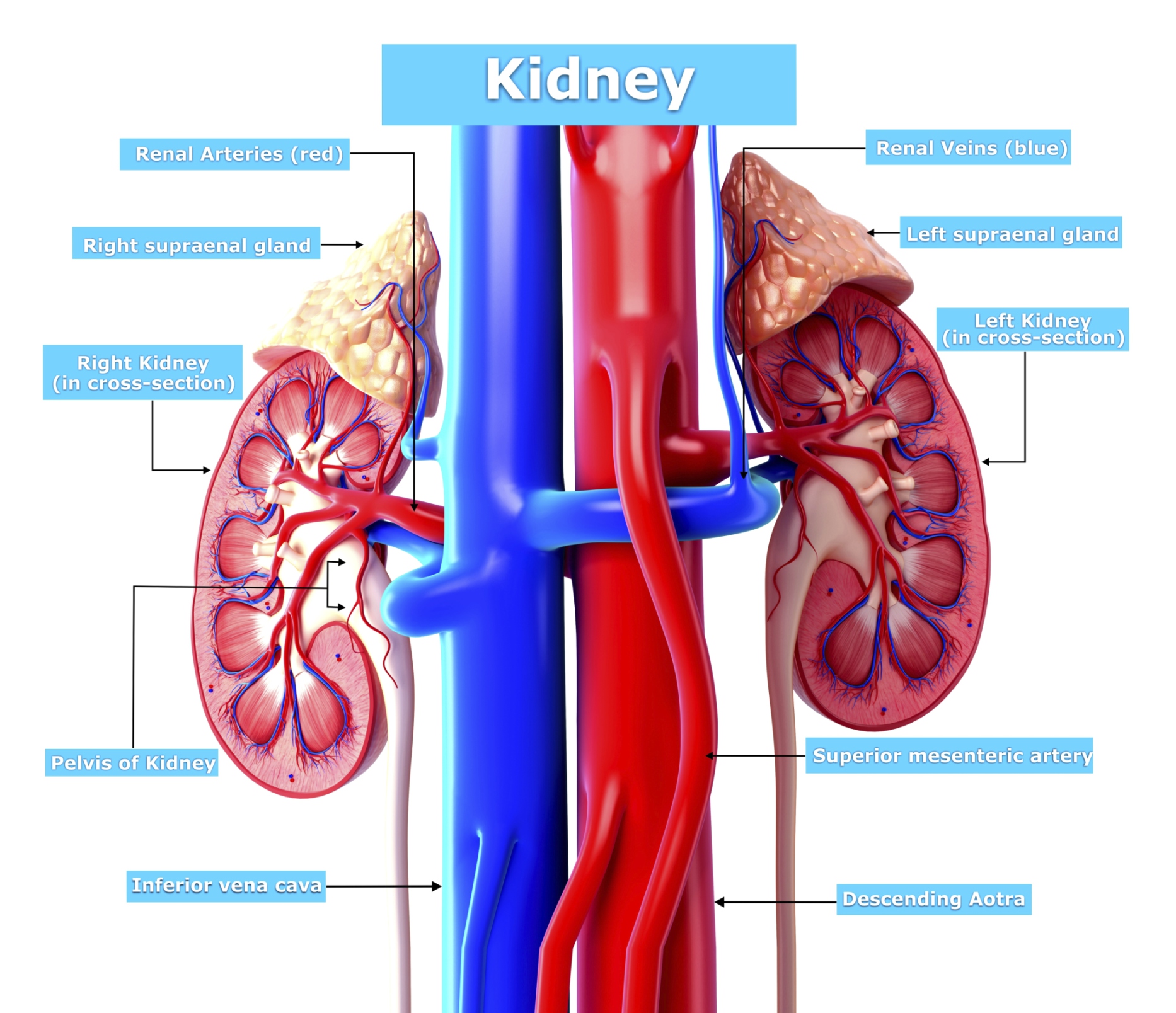
What Are the Parts of the Human Kidney? Healthfully
Length: 11-12 cm Width: 5.0-7.5 cm Weight of an adult kidney: Males: 125-170 g Females: 115-155 g Located in the abdominal cavity, kidneys are the most efficient filters. They are an important component of the human excretory system, and help the body retain essential molecules and get rid of the unwanted ones.
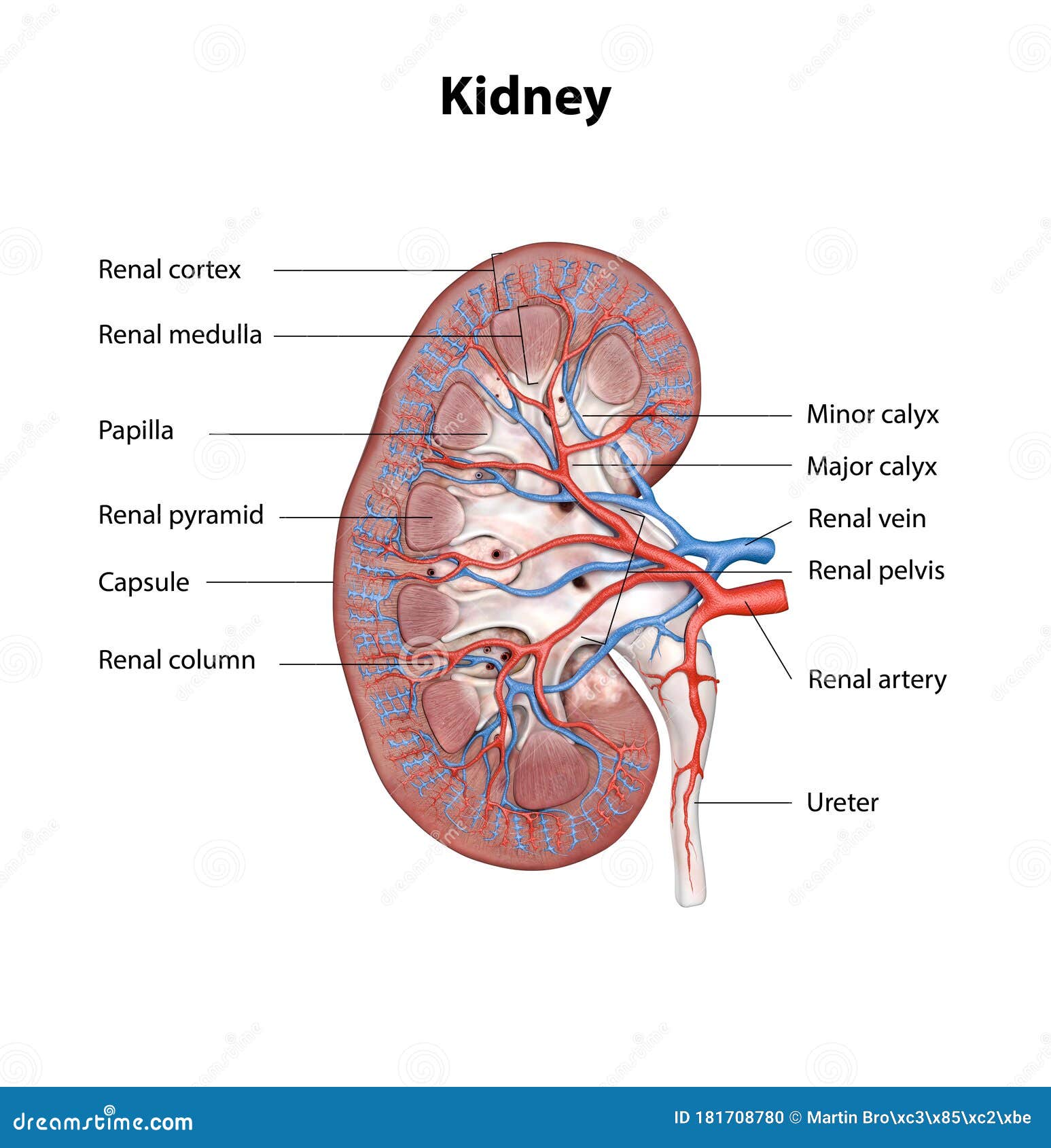
Human Kidney Cross Section, Scientific Background, Anatomy, Urinary System with Main Parts
Human kidney is like that of a goat or sheep. If a longitudinal section of the kidney is made by cutting with a long knife from the outer convex surface to the hilum three layers are seen. (1) Outer Cortex (2) Medulla (3) Pelvis 1. Outer Cortex: This is the solid part of the kidney which is dark coloured and granular cortical portion. 2. Medulla:

Cross Section of Right Kidney Stock Image F031/6574 Science Photo Library
Reading time: 23 minutes Recommended video: External structure of the kidney [11:47] Overview of the structure of the kidney. Kidney Ren 1/3 Synonyms: none The kidneys are bilateral organs placed retroperitoneally in the upper left and right abdominal quadrants and are part of the urinary system.

Please send me a diagram of L.S Of kidney and label the main parts of it.. Brainly.in
Structure. Each of the two bean-shaped organs weighs about 125 to 175 grams and 115 to 155 grams in males and females respectively. The kidney typically measures approximately 11 to 14 centimeters.

Kidney Gross Anatomy
Each kidney weighs about 125-175 g in males and 115-155 g in females. They are about 11-14 cm in length, 6 cm wide, and 4 cm thick, and are directly covered by a fibrous capsule composed of dense, irregular connective tissue that helps to hold their shape and protect them.
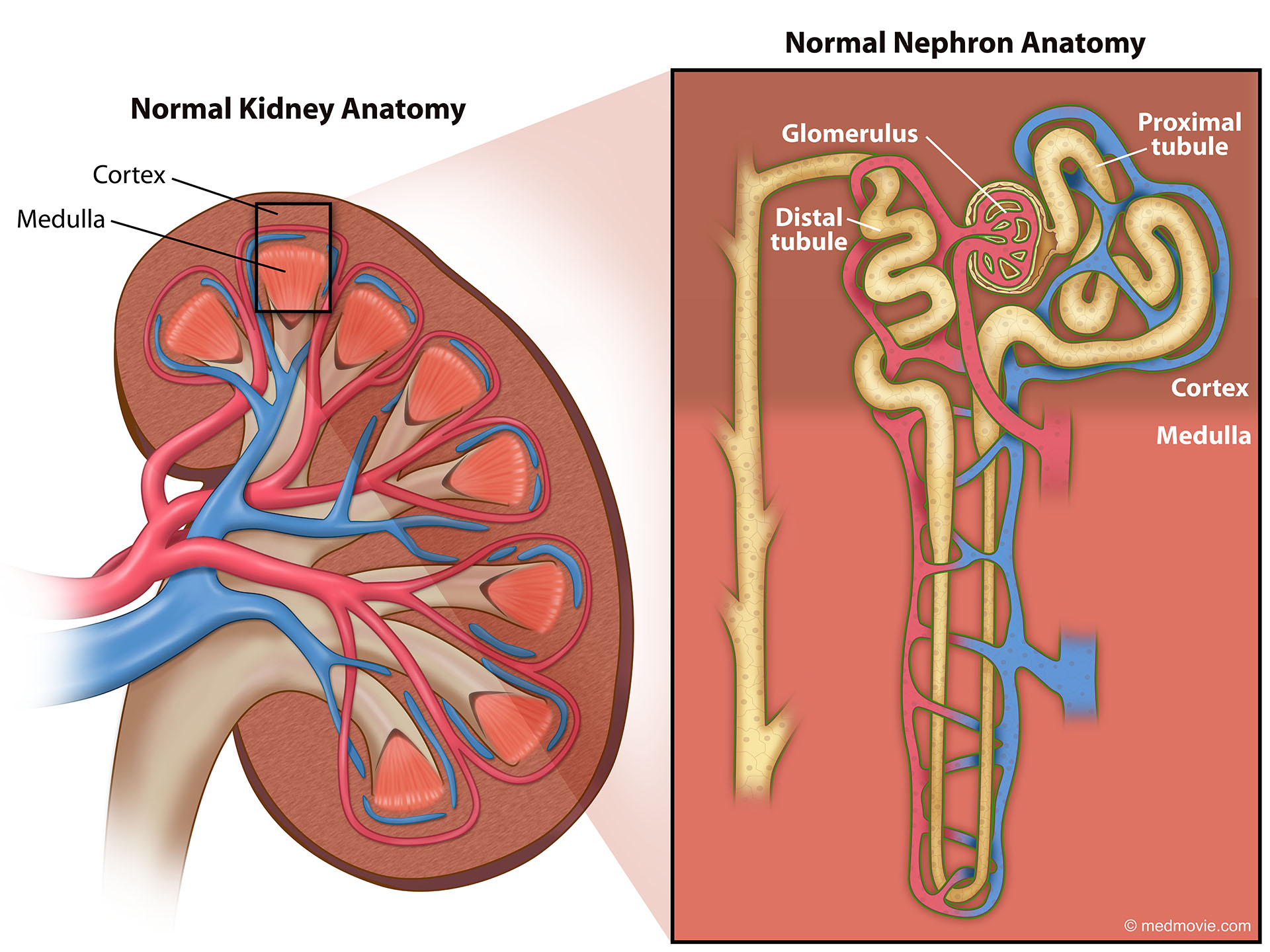
Normal Kidney Anatomy
The kidneys, illustrated in Figure 1, are a pair of bean-shaped structures that are located just below and posterior to the liver in the peritoneal cavity.The adrenal glands sit on top of each kidney and are also called the suprarenal glands. Kidneys filter blood and purify it. All the blood in the human body is filtered many times a day by the kidneys; these organs use up almost 25 percent of.
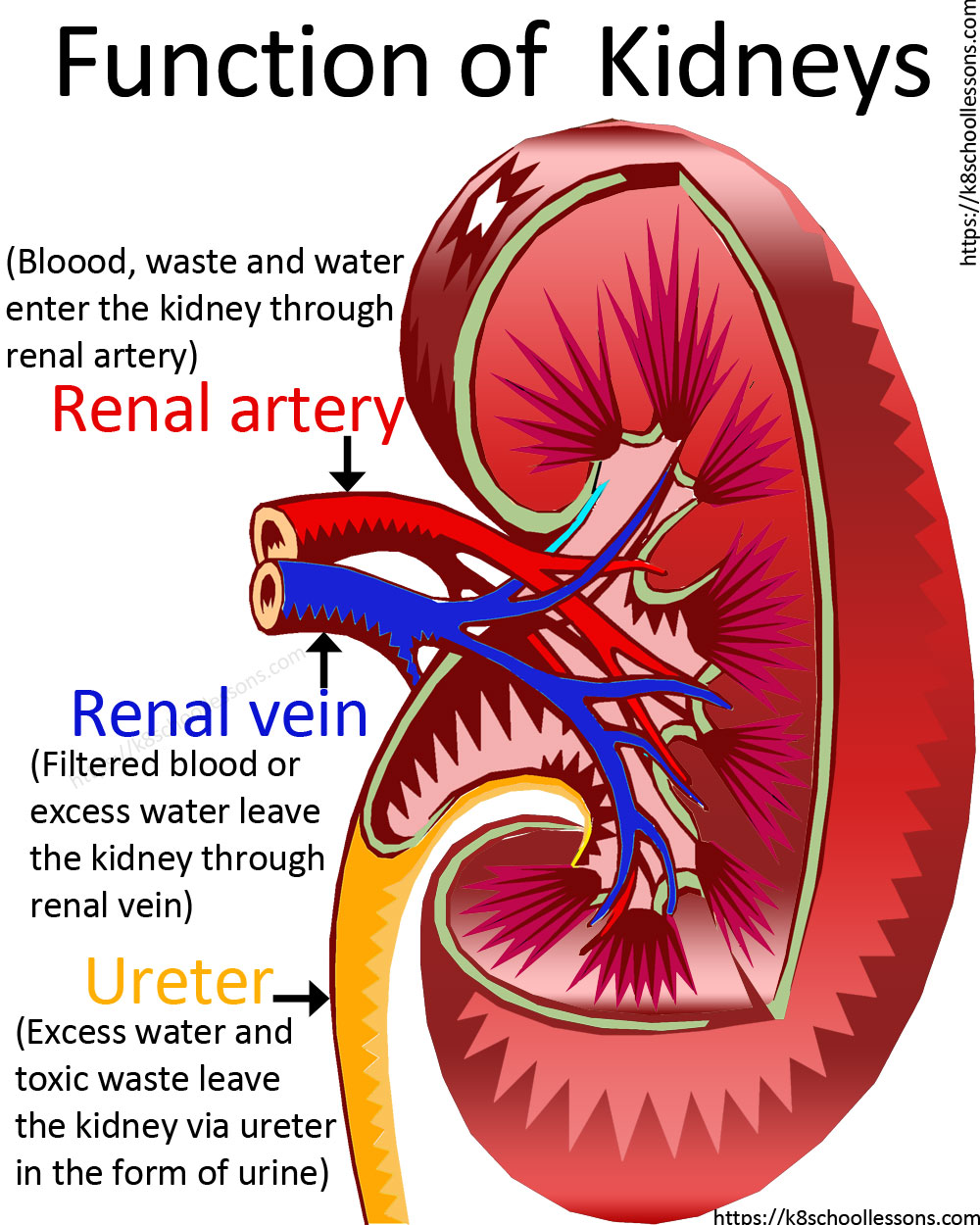
Urinary System for Kids Human Urinary System Human Body Facts
Anatomy Each person has two kidneys. The kidneys are located on either side of the spine, with the top of each kidney beginning around the 11th or 12th rib space. The kidneys are sandwiched between the diaphragm and the intestines, closer to the back side of the abdomen.

Human kidney anatomy. External view (a), internal view (b), and its... Download Scientific Diagram
That this, it is the kidney nephrons that actually perform the kidney's main functions. There are approx. a million nephrons within each kidney. To find out more about these, visit the page about kidney nephrons. Collecting Duct (Kidney): The collecting duct labelled in the diagram above is part of the kidney nephron (shown much enlarged).
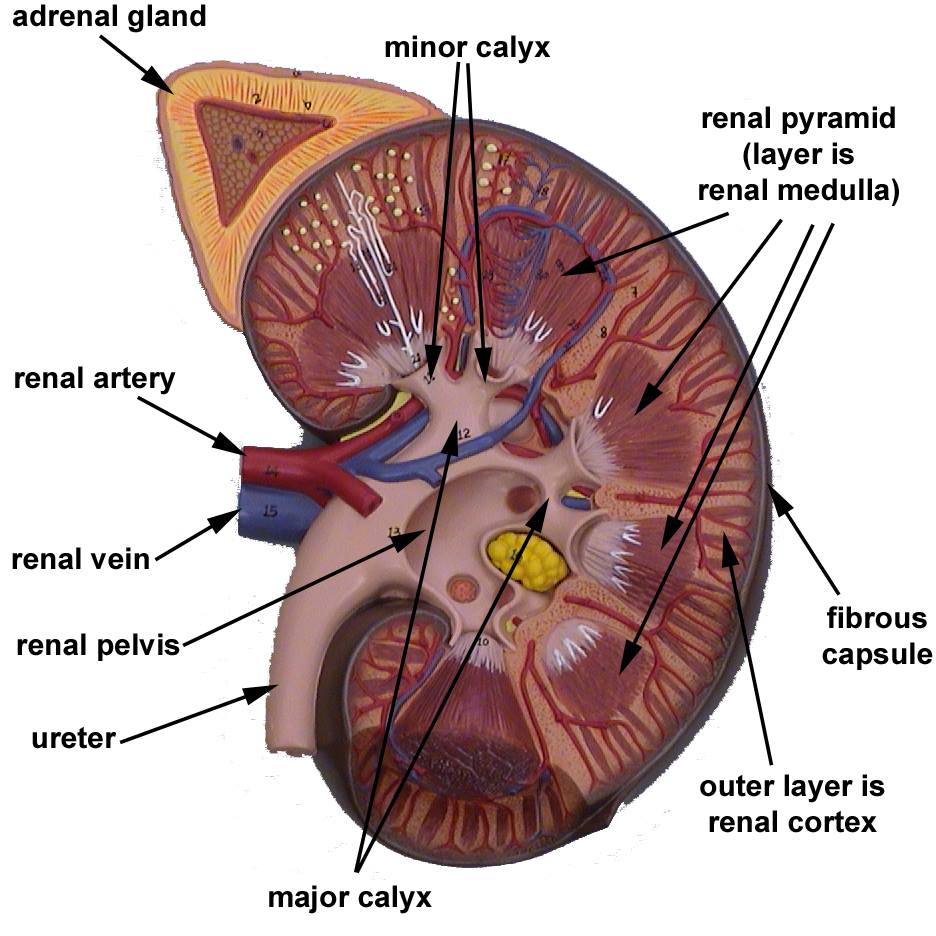
Biology (MBBS) Structure of Human Kidney with labeled diagram Ratta.pk
The system contains two kidneys, which control the electrolyte composition of the blood and eliminate dissolved waste products and excess amounts of other substances from the blood; the latter substances are excreted in the urine, which passes from the kidneys to the bladder by way of two thin muscular tubes called the ureters.
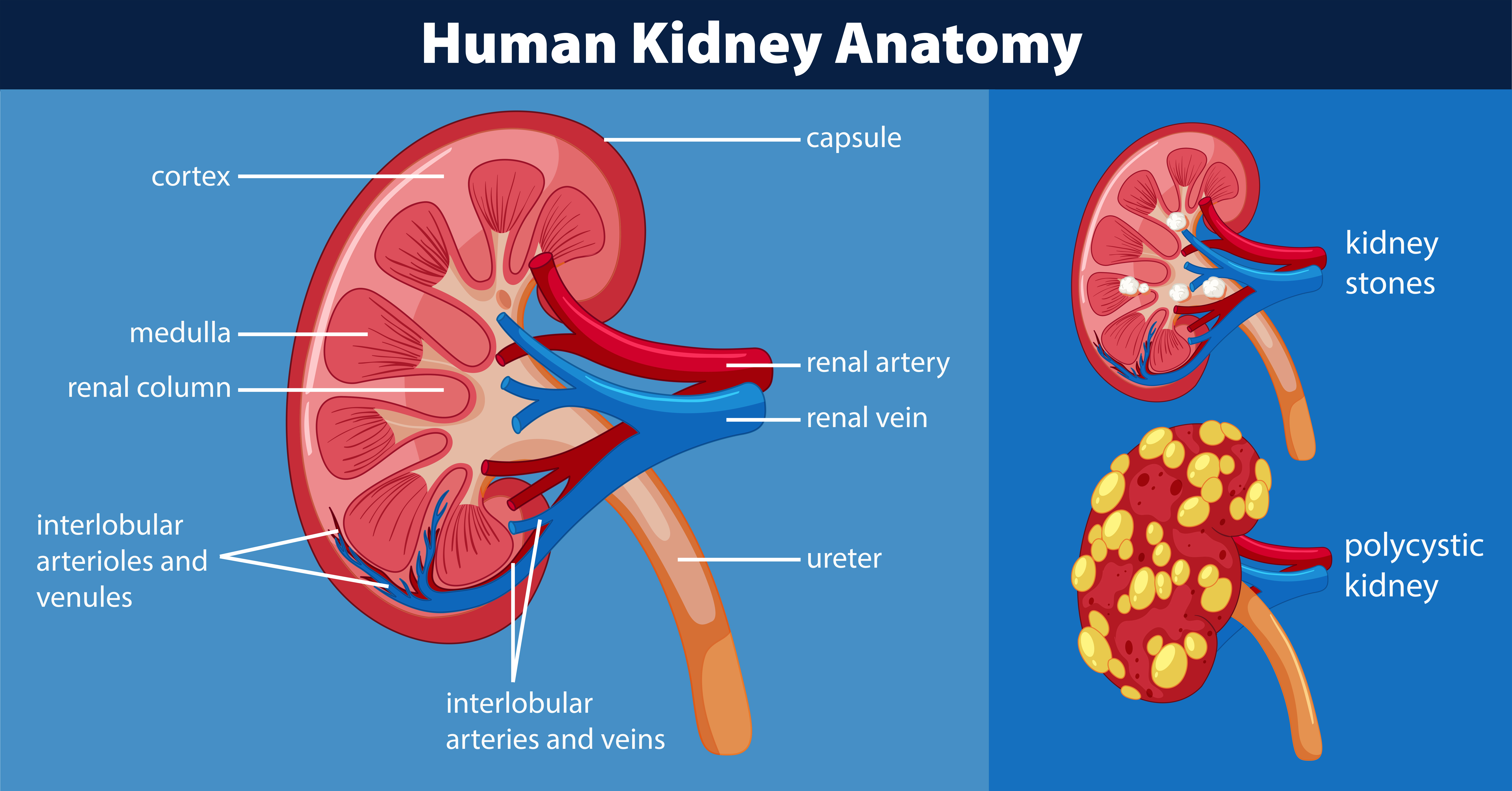
Human kidney anatomy diagram 446409 Vector Art at Vecteezy
The video provides a detailed overview of the kidney's smallest functional unit, the nephron. It explains how the nephron filters blood, excretes waste, and maintains water levels. The video also highlights the role of the renal cortex and renal medulla in this process. The loop of Henle's function in reabsorbing water and making the renal.
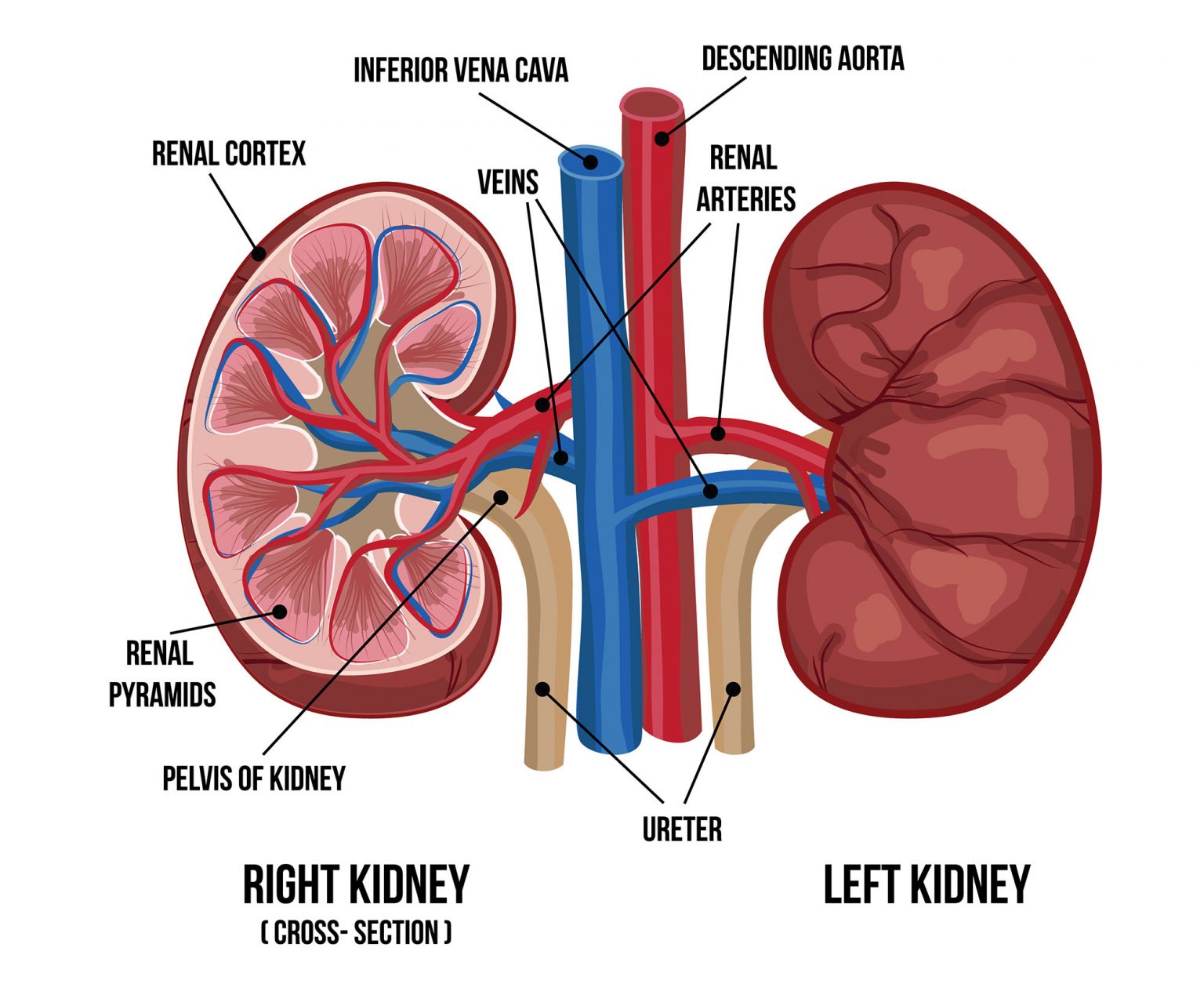
5b2 Organs HumanBio
Anatomical Position. The kidneys lie retroperitoneally (behind the peritoneum) in the abdomen, either side of the vertebral column.. They typically extend from T12 to L3, although the right kidney is often situated slightly lower due to the presence of the liver.Each kidney is approximately three vertebrae in length. The adrenal glands sit immediately superior to the kidneys within a separate.
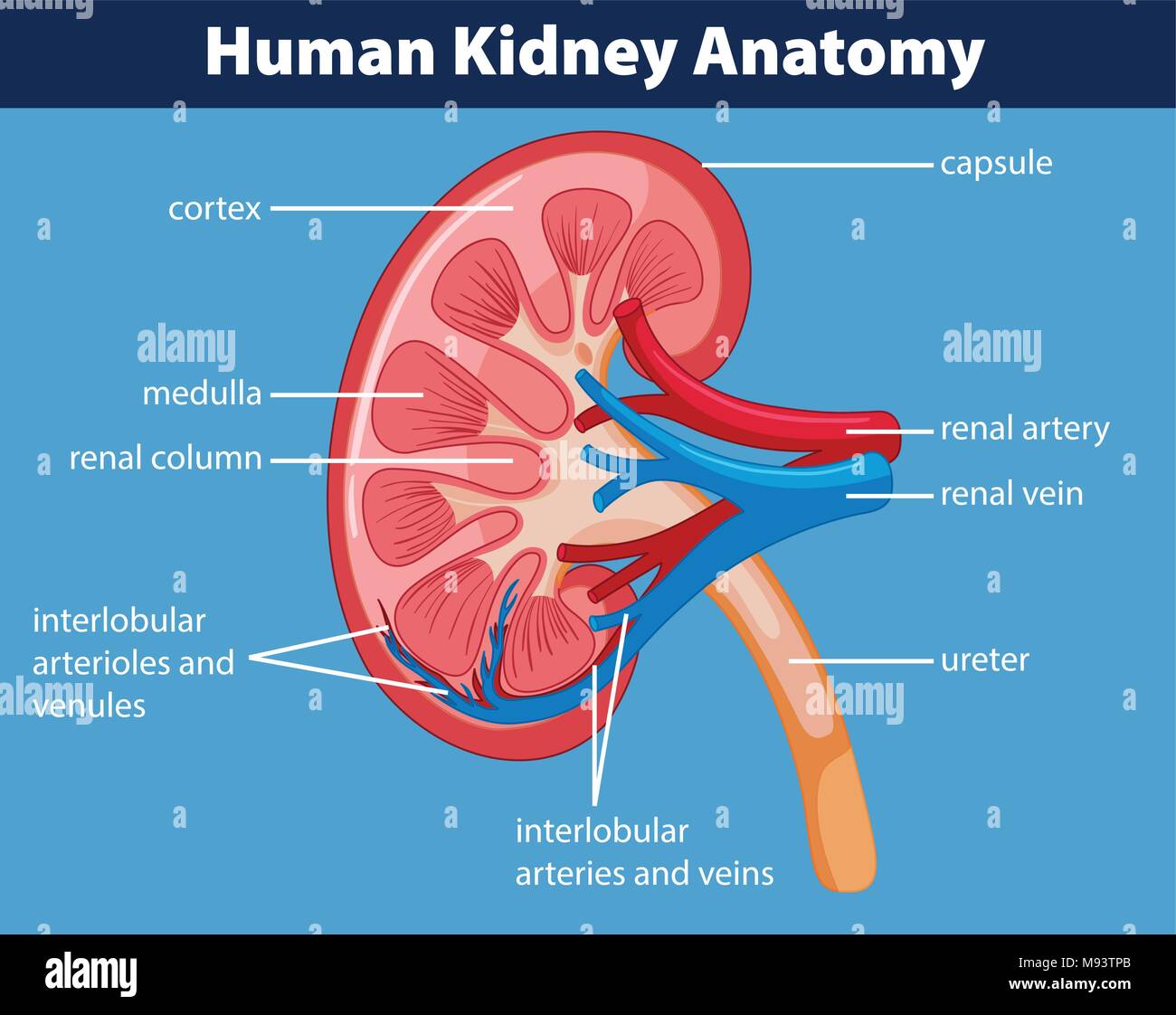
Human Kidney Medical Diagram High Resolution Stock Photography and Images Alamy
Each kidney weighs about 125-175 g in males and 115-155 g in females. They are about 11-14 cm in length, 6 cm wide, and 4 cm thick, and are directly covered by a fibrous capsule composed of dense, irregular connective tissue that helps to hold their shape and protect them.
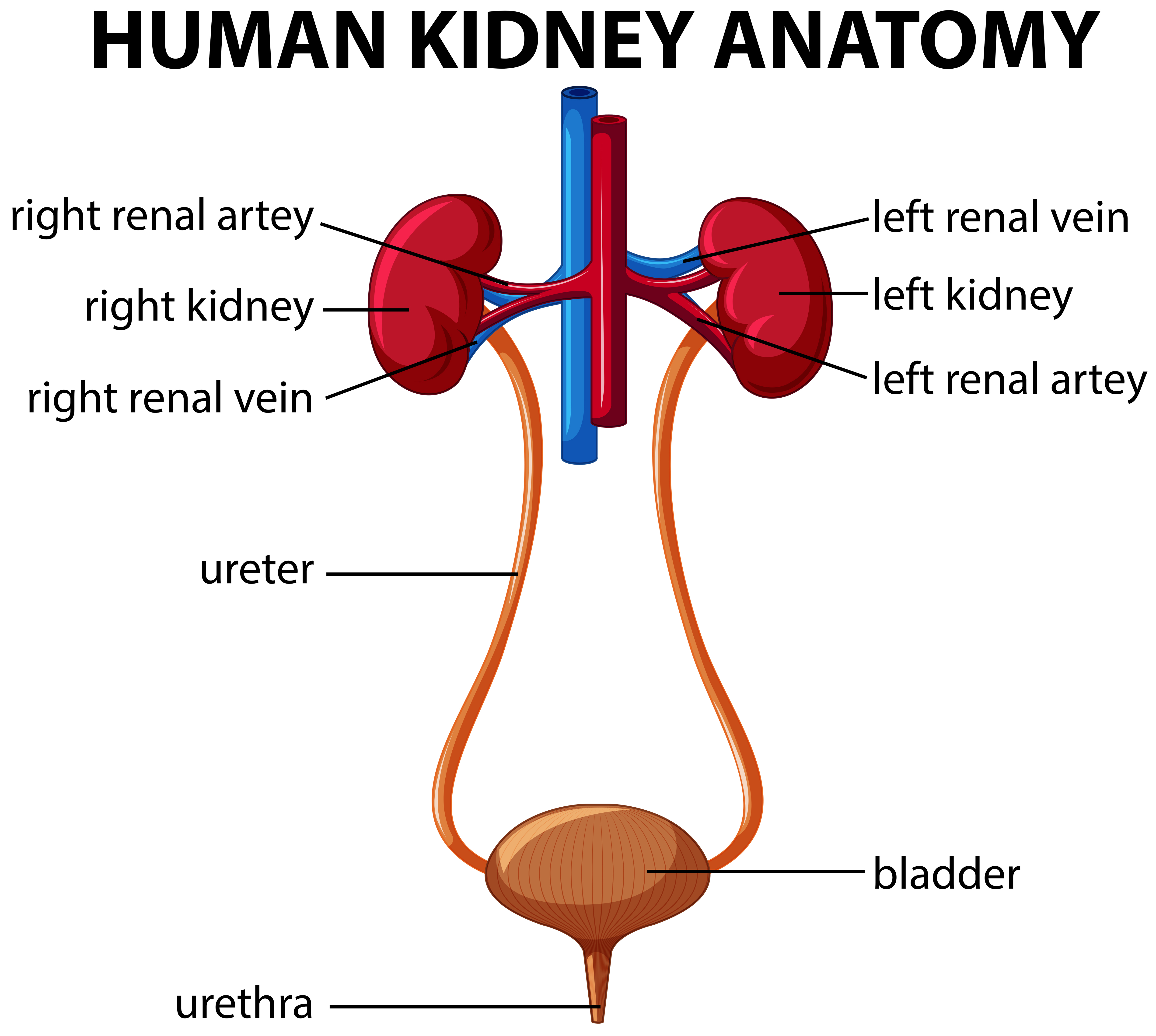
Human kidney anatomy diagram 434204 Vector Art at Vecteezy
A simple structure of kidney can be understood by the following diagram: Function The most important function of the kidney is to filter the blood for urine formation. It excretes metabolic wastes like urea and uric into the urine. It secretes a number of hormones and enzymes such as: Erythropoietin: It is released in response to hypoxia

anatomy of kidneys Anatomy Pinterest
The urinary system consists of 4 major organs; the kidneys, ureters, urinary bladder and the urethra.Together these organs act to filter blood, remove waste products, create urine and transport urine out from the body. The urinary system is also called the excretory system, because held within the urine are the various excreted products, including by-products such as urea and uric acid, drugs.
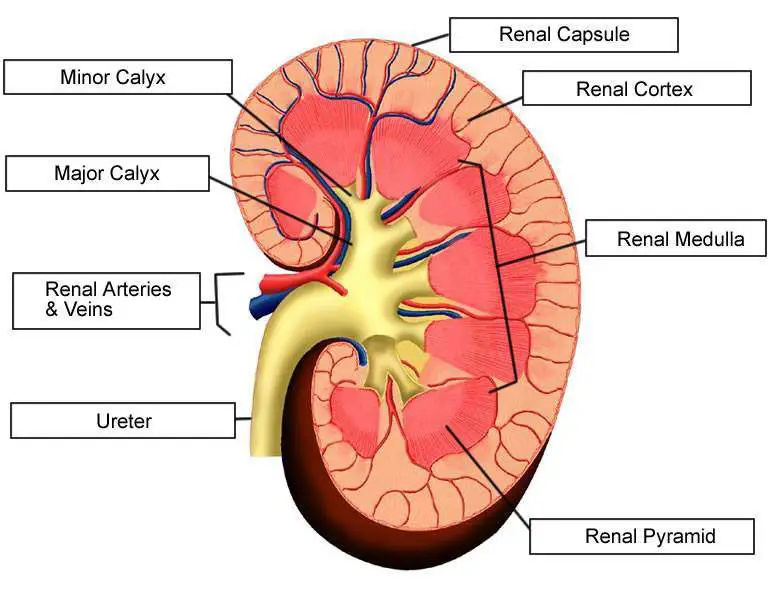
Kidney diagram simple Healthiack
In humans, the kidneys are two reddish-brown bean-shaped blood-filtering organs [1] that are a multilobar, multipapillary form of mammalian kidneys, usually without signs of external lobulation. [2] [3] They are located on the left and right in the retroperitoneal space, and in adult humans are about 12 centimetres ( 41⁄2 inches) in length.

Human kidney medical diagram with a cross section Vector Image
nephron, functional unit of the kidney, the structure that actually produces urine in the process of removing waste and excess substances from the blood.There are about 1,000,000 nephrons in each human kidney. The most primitive nephrons are found in the kidneys of primitive fish, amphibian larvae, and embryos of more advanced vertebrates.The nephrons found in the kidneys (mesonephros) of.